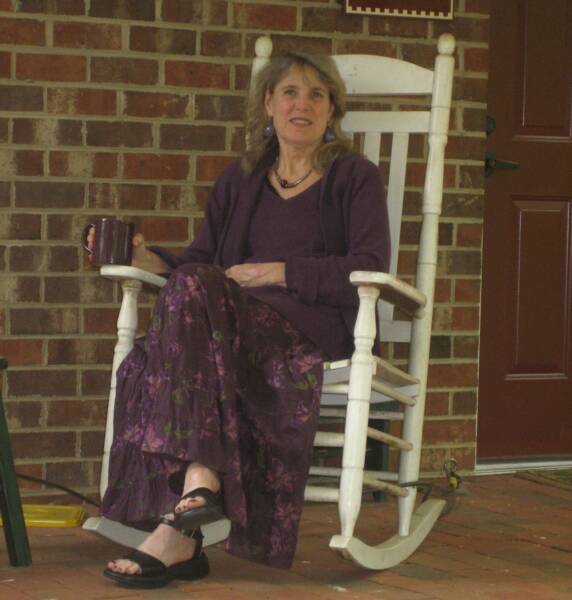Frequently Asked Qestions
What is experiential psychotherapy and why does it work?
Experiential Psychotherapies access emotional and somatic states in order to resolve issues, rather than talking about, analyzing or trying to problem solve them through solely cognitive means. Our beliefs about ourselves and the world, as well as our patterns or responding and behaving in relationships are often formed when we are very young and preverbal. These patterns are also profondly influence by any traumatic or emotionally intense experiences. When we are very young our cognitive
brain is not formed, so much of our memory is stored
Eileen Cleary, LPC
Psychotherapist
Chapel Hill, NC
919-960-477
ecleary737@gmail.com
Will I get re-traumatized with experiential therapy?
There is risk for re-traumatization with poorly done experiential therapy. If one simply opens up old wounds and encourages full emersion into feelings and full expression, it is likely that the experience will be painful, and at risk for re-traumatization. Experiential therapy must be done slowly and carefully. Slow is fast in this business. Before we begin we will develop resources; methods for self soothing, grounding in the present, and finding neutral. It is important especially with trauma to work slowly from the outside in. So we begin with the smallest least traumatic pieces of experience; digest them, come back into resilience and rest here, before we begin the next piece. This not only removes the risk of re-traumatization, it builds tolerance for greater and greater levels of affect. Each person works at a different pace. Together we find the right pace for you, and then it is my job to pace the work. Again it is imperative to be in the seat of awareness of experience so it can be digested and flow through. Critical judgments can cause blockages.
Why is imagery used?
Imagery is used to access memories and promote healing. Through accessing the emotional and somatic states in which events and trauma’s occurred, we can process, release and re-pattern old habitual responses and beliefs. Often we access these states through “inner child” or parts work (imaging and dialoguing with our selves at critical periods or of childhood). It is important to know that inner child work is simply a metaphor for working with neural networks. Neurons that fire together wire together. Emotions, beliefs and responses that occurred together often become deeply embedded in our systems, as these neural networks have fire together for years and often decades. By imaging our inner child or any parts of ourselves, we are accessing a set of neural networks. Through the use of somatically based imagery, corrective experiences are provided, that allow new more adaptive neural networks to form. This gives our brain a more functional response to choose when these emotions are evoked. Suppose you were traumatized as a child by a cat. Every time you see a cat you feel terror and run screaming from the room. This is actually a complex set or neural networks that have fired together for decades and each time the response is repeated it is kindled deeper into the system. If in therapy we can access the 5 year old who was originally terrified, we can surround her with loving and responsive adults, and allow her to feel the terror of the trauma with these resourses available to her. She then has the corrective experience of loving adults helping her manage this very difficult experience. She will have a very different outcome. She will experience her resilience and the safety of competent and protective adults. She learns how to experience fear and trauma and recover from it. She learns she is resilient and safe in the world as opposed to helpless and frozen. Although we are not re-writing history – you still remember the original trauma as it happened. Not only will the emotions be discharged (you will no longer experience the terror), you will have an alternative responses to choose when you are exposed to frightening experiences. Each time the more functional response is made that neural network is strengthened, and the maladaptive one is weakened. This is effective to the degree that we can access and discharge the original emotional state that the trauma occurred in. Once the emotional residue of the trauma has been discharged, new beliefs about yourself and the world are formed as well as new response patterns. Your default setting has been upgraded.
Why is it impotent to integrate the body into therapy?
The work of therapy is often to transform patterns of responses that were developed when we were very young or traumatized. These events and memories are often stored not only in the emotional and somatic centers in our brains, but literally in our bodies. Our bodies will hold constriction that was adaptive at the time, but is not longer useful. Often these constrictions are so habitual that we are not even consciously aware of them. As we bring these patterns and sensations into consciousness, we can access memories related to them, as well as release them. So we use the body to access somatic states where memories are held, and then to discharge and release the traumas. As the body releases it is open to re-patterning to more adaptive responses. Traumas also have a profound effect on our nervous system. We may get stuck in a state of hypervigalence, hypersensitivity or collapse. This is very taxing on the body and can actually lead to chronic illness. With careful and titrated focus the nervous system can be reset. This leaves both the body and mind more resilient and flexible.
Why do you use touch in psychotherapy?
Touch is used to provide support, as well as to facilitate discharge, and energy flow. Often our core beliefs about ourselves and the world are formed when we are very young and preverbal. The most effective way to access these states is through the body, using a sensate focus augmented with gentle touch on a massage table.
Is it ok for psychotherapist to use touch?
Is spirituality an important component of therapy?
Spirituality can be an invaluable tool. Regardless of what your belief system is it can provides a perspective, a wide angle lenses through which to view our lives. We can get a sense of the purpose and meaning of events that are otherwise unexplainable. Often in therapy we are focused in with a telephoto lens on the difficult and painful aspects of our lives. To have access to the bigger picture not only helps us to hold the unanswerable questions, but often provides us with a sense of deep connectedness.
in the limbic and reptilian brains (the emotional and somatic centers of the brain). This is also true for traumatic or highly emotional experiences; they tend to be stored non-cognitively. Attempts to change these beliefs or patterns through solely cognitive approaches are often short lived and frustrating. The insight is there, but the heart and mind feel split. Affirmations and behavior changes don’t last. We must access the limbic and reptilian brain to fully release and re-pattern issues. This is done by slowly and carefully recreating the emotions and sensations that were present when the event originally occurred. In this emotional state we can carefully complete any defensive responses that were thwarted, and provide corrective experiences. We can meet these states with non-judgmental and compassionate awareness which allows experience to flow through. This allows us to form more accurate beliefs about ourselves and the world, and more functional response patterns. With the full resources, emotional maturity and wisdom of our adult selves we can fully upgrade our beliefs and responses.


